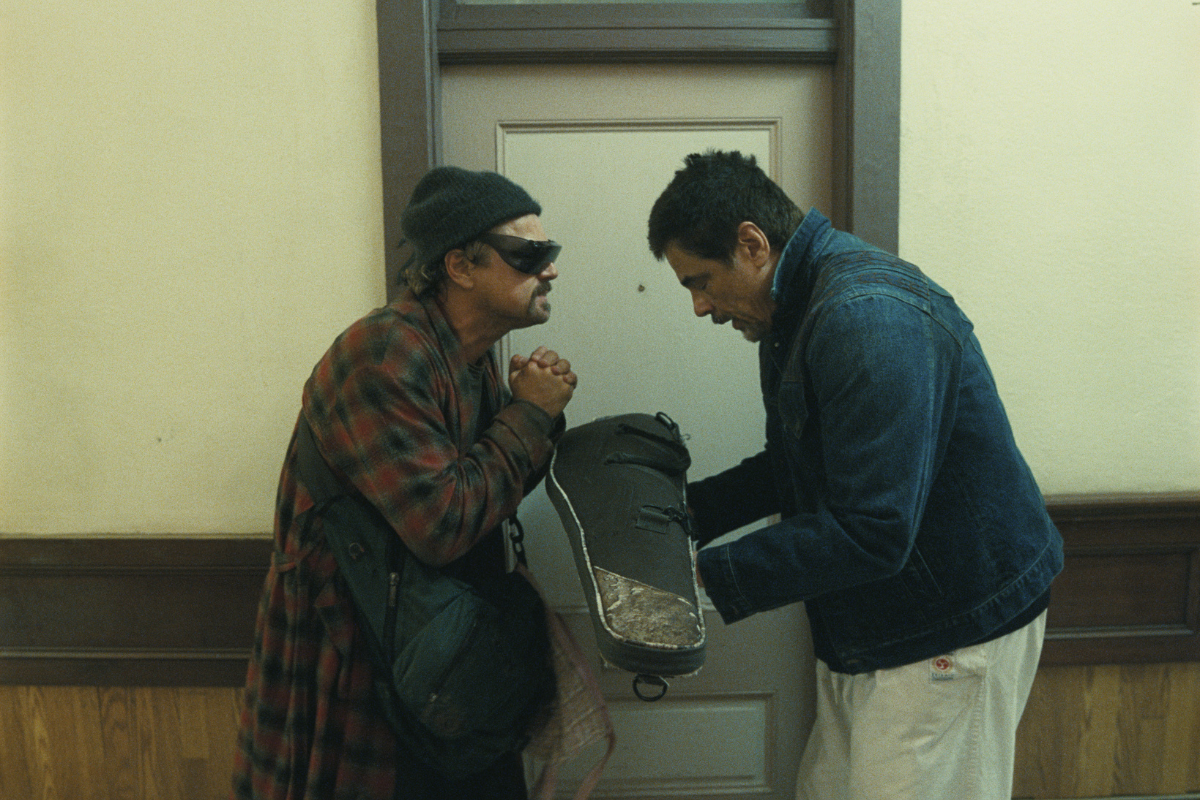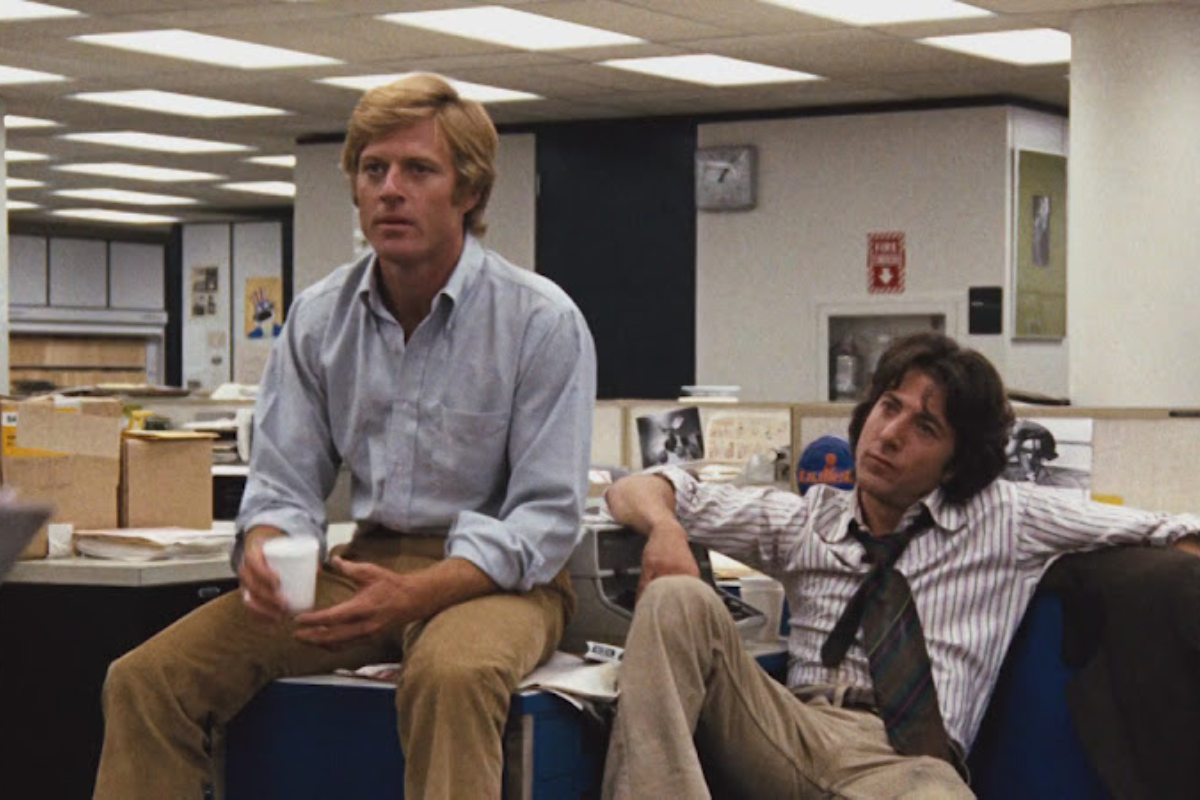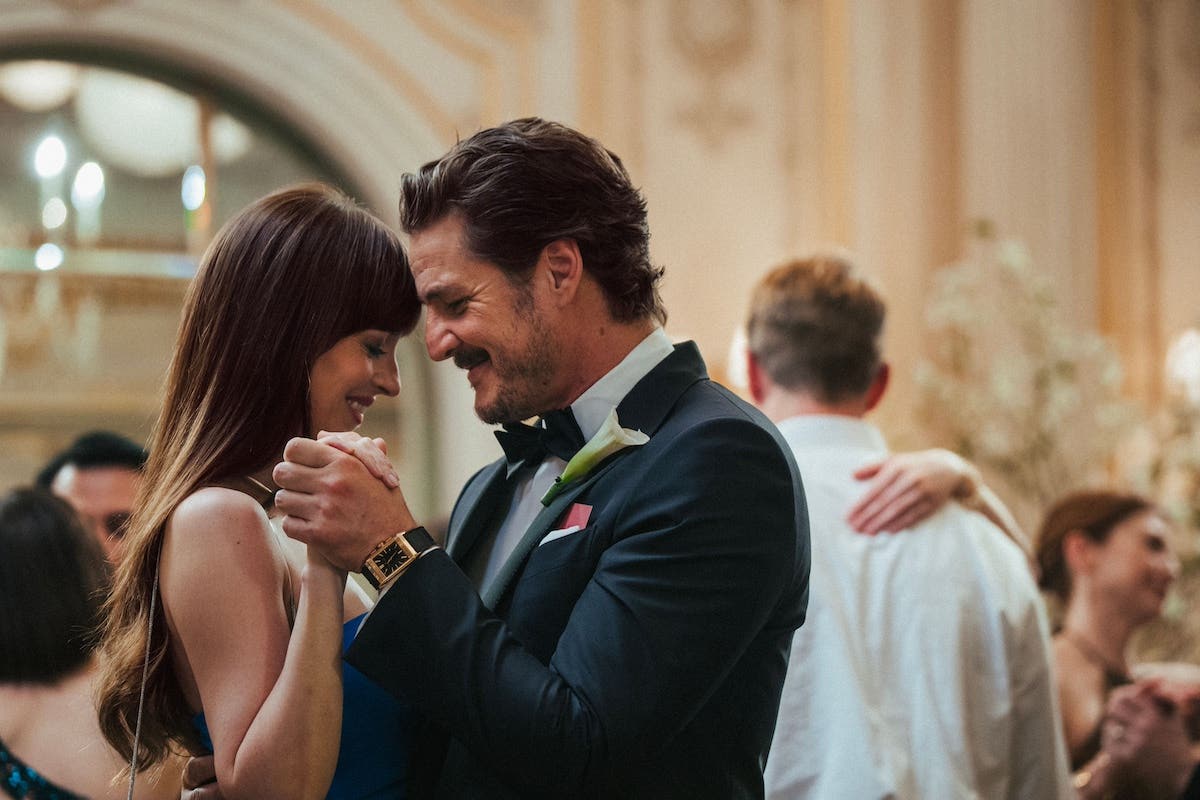UNDERSTANDING SCREENWRITING: Three Really Good Movies and One Really Bad One
Time for some really good movies, like ‘Hit Man,’ ‘Thelma,’ ‘Inside Out 2’ and alas a really bad one, ‘I Used to Be Funny.’
One of the Best Pictures of the Year...So Far.
Hit Man (2023. Screenplay by Richard Linklater and Glen Powell, based on the Texas Monthly Article by Skip Hollandsworth. 115 minutes)
Thirteen years ago Linklater and Hollandsworth co-wrote a lovely little film called Bernie, based on an article of Hollandsworth’s. You can read my review of that film here. It was based on the true story of an assistant mortician who was friends with an old woman…until he killed her. And hid her body in an icebox. Even when he admitted he had killed her, many people in his hometown did not believe he did it.
Bernie is a strange, charming, funny, sweet movie. Most of those things can also be applied to Hit Man. It is based on the true story of Gary Johnson, a college philosophy professor whose tinkering with electronic gizmos leads him to a side hustle helping police record conversations of an uncover cop talking to people who think they are talking to a professional hit man.
OK, how long would it take you if you were writing the script to get all that exposition in? Look at the opening scenes to see how fast Linklater and Powell (who plays Gary) do it. That is great screenwriting.
So we know the movie is going to move fast. But then one day the regular undercover cop can’t show up for work, and the two cops supervising the sting push Gary into pretending to be the hit man. After all, he has been listening to the recordings, so he has some idea of what to do. And that leads to an astonishingly long (in film terms) scene of Gary in character talking to potential customer Craig (Mike Markoff, a classically trained actor but totally convincing as a scum bag of the lowest order). The scene is so perfectly detailed and Markoff and Powell are so great we love, love I tell you, just sitting here watching them.
So, do we get other long scenes with other customers? We do not. The writers have given us so much detail in this scene that we do not need to see much in the following scenes: basically enough to know why these people want someone killed.
By the way, the film makes clear that in real life there are no such people as hit men. There are criminals who kill people, but only as part of their day jobs. Movie hit men are creations of the movies. I used to talk to my screenwriting classes about what their characters do for a living. I noticed that there were too many hit men in the movies. I asked the class if anybody knew an actual hit man in real life. Most semesters no hands went up. One time four or five hands went up. I hope they were joking.
So we get some other potential customers. Just when we think the film is going to become repetitive, Gary meets Madison, who wants him to kill her husband. Bur Gary likes, well, falls in love with Madison, and convinces her not to have her husband killed.
We now follow the relationship of Gary and Madison develop in better than usual romcom style. It helps that Powell has written a great part for himself as Gary, and that Linklater has cast Adria Arjona as Madison. Arjona has been in films since 2018, but this is the first one I have seen her in. She and Powell have great chemistry all the way through the film. Look at the scene where he comes to her wearing a wire but using his cell phone to tell her what not to say since the cops are listening.
And why are the cops listening? Somebody killed her husband. Oops. The twists get very interesting after this, even if you have to run to keep up. Needless to say, I am not going to even give you a clue what happens in the last half hour, but it is as well written as everything, and I mean everything, else in the film.
One of the Worst Pictures of the Year...So Far.
I Used to Be Funny (2023. Written by Ally Pankiw. 105 minutes)
I mainly went to see this film because it stars Rachel Sennott, whom I loved in Shiva Baby (2020), which I reviewed here, and in Bottoms (2023), which I reviewed here.
From the plot descriptions I read, the story sounded like it might fit Sennott well. Her character Sam is a stand-up comic who is going through a down period. She takes a job as a nanny to Brooke, a young teenage girl, and we see their relationship develop. Sennott has worked as a stand-up comic and they could have used some of her material, especially at the end when she gets her groove back. But we get very, very little of the kind of material that would convince us that Sam was ever funny in the first place.
The movie begins with a girl throwing a brick through Sam’s window. If I was listening right, Sam is sure the girl is her sister, who has gone missing. There is a flat scene of her talking to the police about the missing sister, which only shows she does not know much about her sister.
Then she gets a job as Brooke’s nanny, and we gets scenes between them that do not take us anywhere new.
The last half hour is a total mess. We get a scene of Sam talking to Brooke’s father, Cameron, and two of his beer-drinking buddies. The scene seems a waste of our time, but shortly thereafter we get a trial scene where Cameron is convicted of raping Sam, but we only get the attack scene after the trial scene. Sam rescues Brooke from her burning house, but the house appears untouched in later scenes. Some of these scenes may be Sam’s nightmares or fantasies, but that is not clear.
Sam rescues Brooke from some druggies, but Brooke does not want to be rescued.
Remember Sam’s sister? Well, it appears that she is Brooke, or Brooke is her. I think…..a little pause here while I try to read my own notes and get my head back on straight.
As you know, if you have read enough of my columns, I usually have no problems with films that play with time like this one tries to. Look, for example at my review of Alain Resnais’s Providence (1977) here. But for those games to work, the shifts have to appear to be clear. Fellini was a master of taking you someplace where you thought you knew you were and then pulling the rug out from under you.
Pankiw is no Fellini. Or Resnais.
THELMA for President!
Thelma (2024. Written by Josh Margolin. 98 minutes)
This is another candidate for best picture of the year…so far.
That may be because of the time I saw it. That would be the day after the dumpster fire of the first presidential debate of the year. God, did I need comedy relief from that.
I always tend to like movies that get off to a reasonably quick start (see Hit Man above). Thelma is a 90-something grandmother who lives alone. She dotes on her grandson Daniel, who is a nice guy, but sort of a slacker. She putters around her house and she seems to know how to use a computer.
Then, bang, she gets a call from her grandson, who sounds a little different than usual, probably because he is in jail and needs $10,000, in cash. She goes around the house pulling cash out of books and envelopes and other hiding places. She mails it off to the address she is given.
And then she realizes she is the victim of a very, very common scam. I have had several calls like this. One time when I was in an improv mood I kept the kid on the line for 20 minutes before he realized I was on to him. If I don’t want to spend the time, I just ask him what his name is. Or what his mother’s name is. (This has been a public service announcement from this column to you.)
Mostly in these cases, you cannot get your money back. But this is Thelma. When the police say they cannot do much, Thelma takes matters into her own hands. She visits her old friend Ben in a retirement home. And steals his motorized wheelchair/scooter. He grabs another one and chases her down. OK, it is not as flashy as a lot of film car chases, but it is funnier.
And more charming. Thelma is played by the great June Squibb, whom you may remember from her Academy Award-nominated performance in Nebraska (2014). She is now 94 and a ball of fire. Ben is played by the late Richard Roundtree in a far cry from his most famous role as Shaft (1971) and its sequels and TV series. It is a wonderfully sly and subtle performance, a perfect fit for his last film.
So Thelma and Ben track down where the money went. What is in effect the big finish (although Margolin, who also directed, has tacked on a few unneeded scenes afterward) is a brilliant bit of screenwriting. Margolin uses everything the scene provides, including two new characters, a terrifically useful location, and a great set of props. Study this scene for how to write useful elements in your scene.
So I came out of the movie thinking that Thelma would make a better president than either of the two guys, who are younger than she is, whom I saw on the debate. And maybe whoever may be replacing Biden on the ticket.
The GAPS at Their Best.
Inside Out 2 (2024. Screenplay by Meg LeFauve & Dave Holstein, story by Kelsey Mann & Meg LeFauve. 95 minutes
Some of you may not have been born yet when I reviewed the first Inside Out in 2015. You can catch up by reading my review here.
I was not as impressed with the first one as many people were. It did not seem up to the best work of the GAPS (Geniuses at Pixar). They had various emotions (Joy, Fear, Disgust, Sadness, and Anger) as characters, but they all were one-note creations. The makers of that film had talked to a lot of psychologists about the emotions of an 11-year-old girl, but as I noted in the review the filmmakers let their research overcome their imagination.
For the new film, there are some doctors, who I assume are shrinks, in the credits, but the creative people have used them more effectively. It helps that they have added new emotions, or emotion-adjacent, characters, Envy, Ennui, Embarrassment, and best of all, Anxiety. Anxiety is a real fireball of a character, and I was astonished to discover she was voiced by Maya Hawke. I have been impressed with her in live-action films, but who knew she had the vocal range for this part?
I am not sure the characters are more than the one-note types they were in the first film, but having the four new emotions to play off makes them more interesting to watch.
I think the plot is stronger in 2 than it was in 1. Riley has only aged 2 years in the 9 years since the first film. She is now 13 and trying to do well enough in summer hockey camp to make the varsity team. So we get some great ice skating animation, and we get a stronger dramatic line (will she betray her old friends as she tries to suck up to the upperclassmen?) than the first one.
That also means that there are fewer animated set-pieces than in the first one (Imaginationland, Abstract Thought). Those set-pieces simply did not live up to the tradition of both Disney and Pixar animation at its best. There are some nice pieces of animation here, but they never overcome the story and the characters.
Pete Docter, who was a co-writer and director of the first one, said at the time that he did not have any interest in doing a sequel, although he admitted it looked as though the end of the first one a sequel was being set up. Docter’s credit on the new one is only as executive producer, but he has let the creatives go in the right direction.
At the end of the first film, a new, large, red button is added to the control panel of Riley’s emotions. It is labeled “Puberty.” The other emotions wonder about pressing that. “What could go wrong?” one asks. We and the creatives have had nine years to think about that.
My suggestion at the end of my review was that they add the emotion “Lust.” I wrote, “Yeah, let’s see Pixar and Disney deal with that.” You can see why nobody lets me anywhere near making real movies.
What they have rightly done instead is focus on all the other emotions that 13-year-old girls go through. You can see why they made Riley thirteen. It makes for a very lively film.
One other thing. Occasionally when a character or emotion remembers something, a grandmotherly type pops out and starts getting nostalgic before everybody pushes her back in her cupboard. It is a great recurring gag.
And the grandmother is voiced by June Squibb, Thelma herself.
Yeah, I still think Thelma ought to run for president.
Oh, another small detail. When 2 opened, it grossed $600 million the first weekend, and $400 million the second weekend.
OK, I may be a little off on those figures, but my point is that 2 has made a LOT of money. In movie theaters. Not on streaming
The idiots who have been thinking streaming will eliminate movie theaters are now tearing their hair out. If I worked for Netflix, which thank God, I do not, I would be very nervous about my job.
Tom Stempel is a Professor Emeritus at Los Angeles City College, where he taught film history and screenwriting from 1971 to 2011. He has written six books on film, five of them about screen and television writing. You can learn more about his books here. His 2008 book Understanding Screenwriting: Learning from Good, Not-Quite-So- Good, and Bad Screenplays evolved into this column. The column first appeared in 2008 at the blog The House Next Door, then at Slant, and then Creative Screenwriting before it found its forever home at Script.
In the column he reviews movies and television from the standpoint of screenwriting. He looks at new movies, old movies, and television movies and shows, as well as writing occasional other items, such as appreciations of screenwriters who have passed away, plays based on films, books on screenwriting and screenwriters, and other sundries.
In September 2023 Tom Stempel was awarded the inaugural Lifetime Achievement in the Service of Screenwriting Research by the international organization the Screenwriting Research Network.







